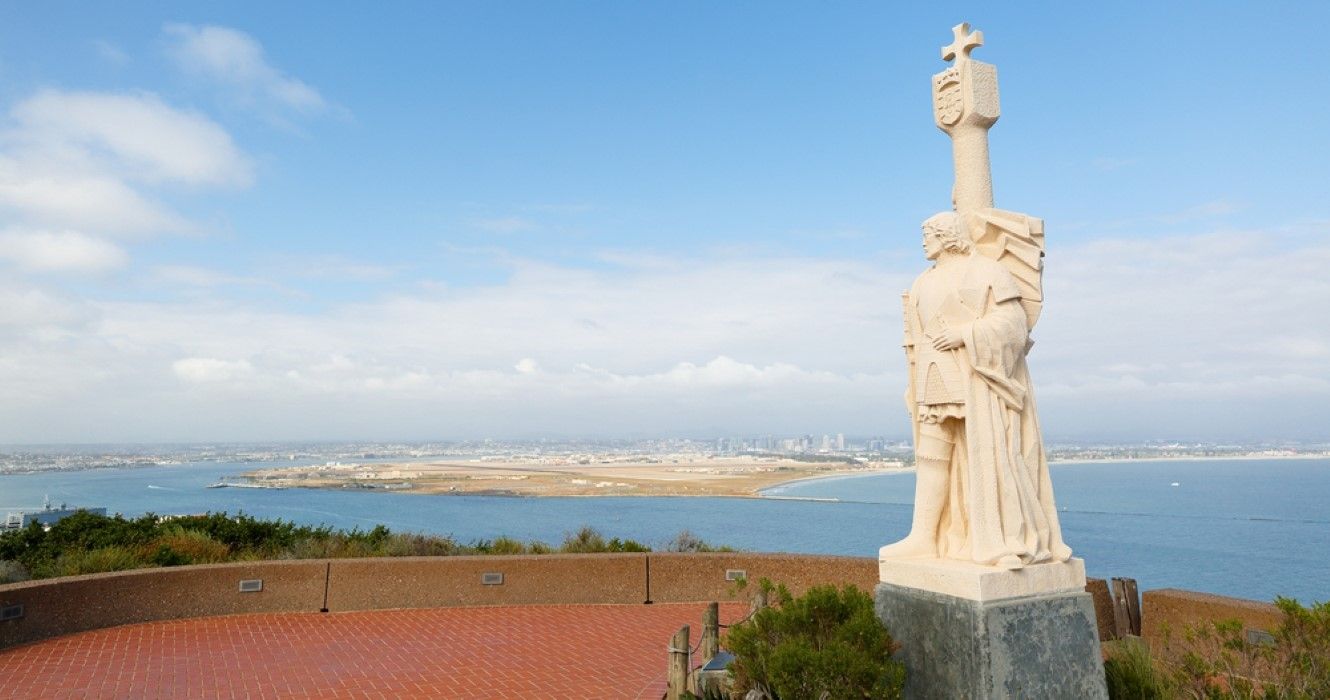Quick Links
Travelers seeking to discover the beautiful Cabrillo National Monument, in Point Loma, San Diego, may be greeted by a bit more than they expected. Fairly recently, a new shipwreck was added to the protected area adding a brand-new sight for travelers to experience. This not-so-intentional addition to the monument sight, won’t likely be going anywhere soon, so travelers should check it out.
Sometimes strange things happen, and for an unfortunate sea vessel, the unfortunate event was getting stranded on a stretch of protected land. So no, travelers venturing to the Cabrillo National Monument can check out this shipwreck as well as the monument and ponder exactly what happened for this boat to end up where it is.
The Story Behind The Wreck At Cabrillo National Monument
The shipwreck found at Cabrillo National Monument, one of many photo-worthy spots in San Diego, is a fairly recent addition to the scenery.
As the story goes, the ship belonged to a man and his dog who lived together on the boat. One day, it was caught in a swell and carried to its new position. The man and his dog were rescued, but there were some issues regarding the boat itself.
They attempted to have his boat retrieved, but due to its location on protected land, the impracticality of removing it, and not wanting to damage the protected area, it has simply remained there.
So, at least until the moment this article was written, Cabrillo National Monument has a strange new attraction to intrigue visitors.
What To See At Cabrillo National Monument
This monument is in dedication to Juan Rodriguez Cabrillo who was the first European to walk on what is now known as the West Coast of the United States of America in 1542.
There is quite a bit of history for travelers to check out and learn during a visit here, but almost more importantly the protected natural area around the monument is a wealth of life and natural resources.
Protecting this area has been a major reason why the ship has remained wrecked near the monument.
The importance of this area to the history of San Diego is incredibly significant. The discovery of this spot by Juan Rodriguez Cabrillo would lead to the development of southern California.
Tide Pools At Low Tide
Speaking of the nature surrounding the park, the fragile and incredible tide pools of the area are a major draw to travelers who want to discover the incredible variety of life that lives in the pools. Over 350,000 people visit the tide pools every year.
For travelers looking to check out these tide pools, it is recommended that they visit during the fall and winter months. During this time the area has its lowest low tides.
If travelers were to visit during the spring or summer, it is likely that the tides would never get low enough to properly view.
Travelers are strongly encouraged to obey all the rules around visiting the park, as they exist to help perpetuate its natural beauty.
- Best Time to Visit - Fall and Winter
- How Many Visit? - 350,000 Annually
Old Point Loma Lighthouse
The Old Point Loma Lighthouse is one of the primary tourist draws to the area due to its stunning and aesthetic location along the coast.
Many travelers pass through the area to grab a picture of and with the iconic lighthouse. Its importance to the history of the area has made it incredibly iconic in modern times.
Despite its modern popularity, the Old Point Loma Lighthouse was looked upon so fondly. The necessity of its existence was once called into question, and it has sat in disrepair for years.
Though, it has become one of the most visited and appreciated parts of the Cabrillo National Monument.
Juan Rodriguez Cabrillo National Monument
Juan Rodriguez Cabrillo was the first to lead a European expedition to what is now known as the west coast of the United States. His expedition left Navidad, Mexico on June 27th, 1542. It would take the exhibition three months to reach what was described as “a very good enclosed port,” that we know today as San Diego Bay.
Historians believe that Juan Rodriguez Cabrillo and his crew anchored at what is now Point Loma’s east shore near the area of the modern-day monument.
The Juan Rodriguez Cabrillo National Monument was established in 1913.
Cabrillo would end up dying during this exhibition, but his crew did continue as far north as Oregon before winter storms forced them back south towards Mexico.
Today, the remains as a memory of Juan Rodriguez Cabrillo and his voyage north that led to the discovery and eventual settling of the area that would become San Diego and San Diego Harbor.
It was also the first time the indigenous people of the region were encountered by Europeans. The Spanish and their exploration and settling of this area have played major roles in the complex history of California.

